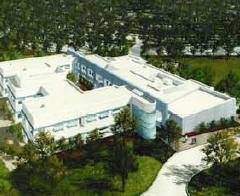National Atmospheric Release Advisory Center: Difference between revisions
John Leach (talk | contribs) m (Text replacement - "{{subpages}}" to "{{PropDel}}<br><br>{{subpages}}") |
mNo edit summary |
||
| Line 45: | Line 45: | ||
==References== | ==References== | ||
<references/> | <references/>[[Category:Suggestion Bot Tag]] | ||
Latest revision as of 16:00, 23 September 2024
| This article may be deleted soon. | ||
|---|---|---|
NARAC is a part of the Lawrence Livermore National Laboratory (LLNL)[3] which is a premier applied science laboratory that is part of the National Nuclear Security Administration (NNSA)[4] within the U.S. Department of Energy (DOE). NARAC's primary functionsNARAC's primary function is to support U.S. Department of Energy and U.S. Department of Defense sites, and DOE consequence management (CM) teams for radiological releases through the DOE's Atmospheric Release Advisory Capability (ARAC)[5] program. Under the auspices of the National Response Framework, NARAC assists other federal agencies and, through them, state and local agencies. NARAC's support and advisory responsibilities are implemented by:
Location and operational facilitiesNARAC is located at the Lawrence Livermore National Laboratory in Livermore, California (U.S. state) (about 50 miles east of San Francisco, California). The operational facilities operated by NARAC include:
To provide integrated emergency response support, NARAC collaborates with more than 300 federal, state, and local agencies and emergency operations centers. The center’s operational system responds to about 7,000 requests per year and has over 1,800 online users.[6] The Emergency Response SystemNARAC maintains a sophisticated Emergency Response System at its LLNL facility. The NARAC emergency response central modeling system provides real time atmospheric dispersion modeling[7][8] using an integrated suite of meteorological and atmospheric dispersion models.[9] NARAC clients access this system using software supplied by NARAC. With this system NARAC provides an automated product report for almost any type of hazardous atmospheric release anywhere in the world within 5 to 10 minutes.[9] When a client initiates a request via a phone call or interactively using the NARAC-supplied software online, the automated steps taken by the Emergency Response System are summarized below:[9][10]
References
|
||
- Pages using ISBN magic links
- Articles for deletion January
- CZ Live
- Earth Sciences Workgroup
- Engineering Workgroup
- Chemical Engineering Subgroup
- Environmental Engineering Subgroup
- Emergency management Subgroup
- Articles written in American English
- All Content
- Earth Sciences Content
- Engineering Content
- Chemical Engineering tag
- Environmental Engineering tag
- Emergency management tag
